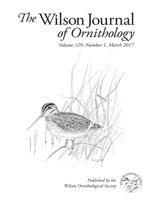The critically endangered Hawaiian Crow or ′Alalā (Corvus hawaiiensis) is currently extinct in the wild and the remaining 115 individuals are being captively managed on Hawai′i and Maui Islands by the Zoological Society of San Diego. Here we provide the first comprehensive analysis of the vocal repertoire of this species. We documented the vocal repertoire of three male-female pairs of ′Alalā during the 2012 breeding season at the Keauhou Bird Conservation Center (KBCC) on Hawai'i Island. Vocalizations were recorded using an automated acoustic recorder placed outside each of three aviaries housing each pair of ′Alalā. A total of 44 hours of recordings were analyzed to describe the structure of vocalizations, call characteristics, and vocal repertoire of this species. We identified 24 different call type categories with fundamental frequencies between 500 Hz–2 kHz. Variation within each call type was observed, as well as variation of similar call types among ′Alalā breeding pairs. Many calls contained a variety of nonlinear dynamical states, including deterministic chaos, frequency jumps, bifurcation, and varying harmonics and subharmonics. These findings provide important baseline information on ′Alalā vocal behavior that may assist future efforts to release these birds back into the wild.
How to translate text using browser tools
1 March 2017
Vocal repertoire and signal characteristics of 'Alalā, the Hawaiian Crow (Corvus hawaiiensis)
Ann M. Tanimoto,
Patrick J. Hart,
Adam A. Pack,
Richard Switzer
ACCESS THE FULL ARTICLE
bioacoustics
Breeding season
captivity
corvid
Hawai′i
vocalizations





